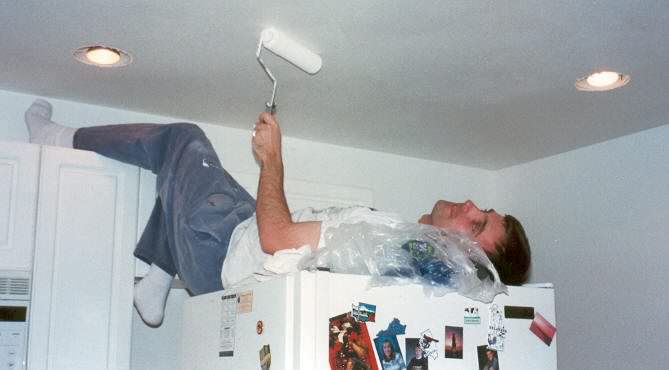Painting is a DIY project that virtually everyone can master. Regardless of whether you’re a seasoned painter, though, you’re bound to encounter tough or difficult-to-reach areas occasionally. Fortunately, there are a few easy tricks that anyone can use to paint these areas with excellent results. Here are pro tips for addressing three common problem areas.

3 DIY Painting Techniques to handle the Tough Areas
Painting window trim
Sometimes it’s a real challenge to paint window muntins (the wood diving panes of glass) and sashes neatly, and it will be time-consuming if you attempt to mask out the glass with painter’s tape first. Here’s a time saving solution: Go ahead and get rid of your painter’s tape! This is one time whenever it simply doesn’t matter if your paint job is a bit messy. It’s OK to get paint on the window glass. Just wait for the paint to dry, and then scrape it off easily using a razor blade, for clean, crisp edges. For optimum results, scrape up the dried paint shortly after it dries, and don’t let it sit for more than a day or so.
Painting behind the toilet
Bathrooms have an overabundance of tight areas than most rooms, and perhaps the most challenging of all will be the space behind the toilet. This is where a “hot dog” roller comes into play. It works just like a regular paint roller, only it’s smaller, narrower and shorter. This is actually the best tool for painting behind the toilet, but it’s also the perfect tool for painting behind radiators and other fixtures. The truth is, you may find all sorts of tight spaces that your hot dog roller can reach that might have been a genuine challenge to paint without it. If you need a longer handle on the roller to get into a particularly tight or high space, you can screw on an extension pole to supply the right amount of reach to get your hot dog roller into the space.
Painting high ceilings and walls
There may be some high areas in your home where a ladder simply can’t go, for instance above a staircase. And whenever you have to paint a wall right up to the ceiling, it’s likely to be a challenge. Perhaps in past times you’ve tried attaching a paintbrush to a pole to reach these high areas. However that can be extremely awkward, and you might wind up creating a mess.
Enter the paintbrush extension tool. Think of it as an extension of your arm, holding your paintbrush right up to the top of the wall in the area where the roller can’t go. And it’s flexible, so you can position your paintbrush in just the right way.
We would love to hear your comments or suggestions you have to handle these tough areas. Feel free to let us know what you think by clicking here